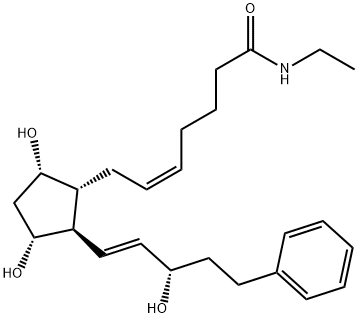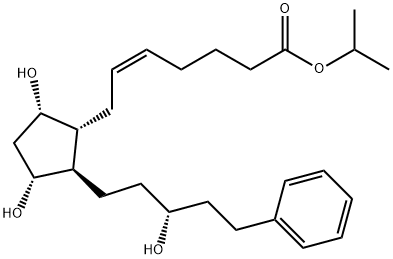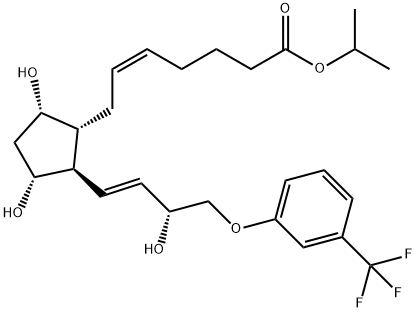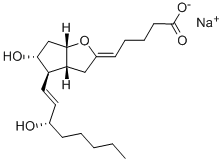Bimatoprost , 10mMinDMSO , 155206-00-1
Synonym(s):
Bimatoprost
CAS NO.:155206-00-1
Empirical Formula: C25H37NO4
Molecular Weight: 415.57
MDL number: MFCD03411999
EINECS: 642-890-9
| Pack Size | Price | Stock | Quantity |
| 1ml | RMB267.20 | In Stock |
|
| others | Enquire |
PRODUCT Properties
| Melting point: | 66-68°C |
| Boiling point: | 629.8±55.0 °C(Predicted) |
| Density | 1.145±0.06 g/cm3(Predicted) |
| storage temp. | -20°C |
| solubility | Chloroform (Slightly), Dichloromethane (Slightly), Methanol (Slightly) |
| form | solid |
| pka | 14.25±0.20(Predicted) |
| color | White to Off-White |
| BCS Class | 3 |
| Stability: | Light Sensitive |
| InChIKey | AQOKCDNYWBIDND-FTOWTWDKSA-N |
| SMILES | C(NCC)(=O)CCC/C=C\C[C@H]1[C@@H](O)C[C@@H](O)[C@@H]1/C=C/[C@@H](O)CCC1=CC=CC=C1 |
| CAS DataBase Reference | 155206-00-1(CAS DataBase Reference) |
Description and Uses
Bimatoprost was first introduced in the US and Brazil as Lumigan?, an ophthalmic solution (0.03%) for the reduction of elevated intraocular pressure (IOP) in patients with open-angle glaucoma or ocular hypertension, a proven risk of glaucomatous visual field loss. Bitamoprost is a new agent belonging to the PGF2α analog class of prostamides launched in this indication after latanoprost, the most efficaceous topical medication currently available. This synthetic fatty acid amide can be prepared by esterification of 17- phenyl-18,19,20-trinorprostaglandin F2α followed by ethylamidation. Bimatoprost, as related prostamides, is devoid of typical activities associated with PGF2,, analogs; it exhibits a unique pharmacological profile in contracting the feline iris sphincter with an EC50 of 34 nM without interacting with any known prostanoid receptors. Thus it mimics the action of endogenous prostamides on specific receptors that lower IOP by increasing aqueous humor outflow through both pressure-insensitive and pressure-sensitive pathways without reducing humor formation. In a 3-month controlled clinical trial of efficacy and safety in patients with elevated IOP, bimatoprost demonstrated lower mean intraocular pressures at every time point throughout the study, as well as a good tolerance and systemic safety profile compared to latanoprost.
Antiglaucoma. Synthetic prostamide; structurally related to prostaglandin F2a.
Safety
| Symbol(GHS) |   GHS07,GHS08 |
| Signal word | Danger |
| Hazard statements | H302-H360F |
| Precautionary statements | P201-P301+P312+P330-P308+P313 |
| WGK Germany | 3 |





